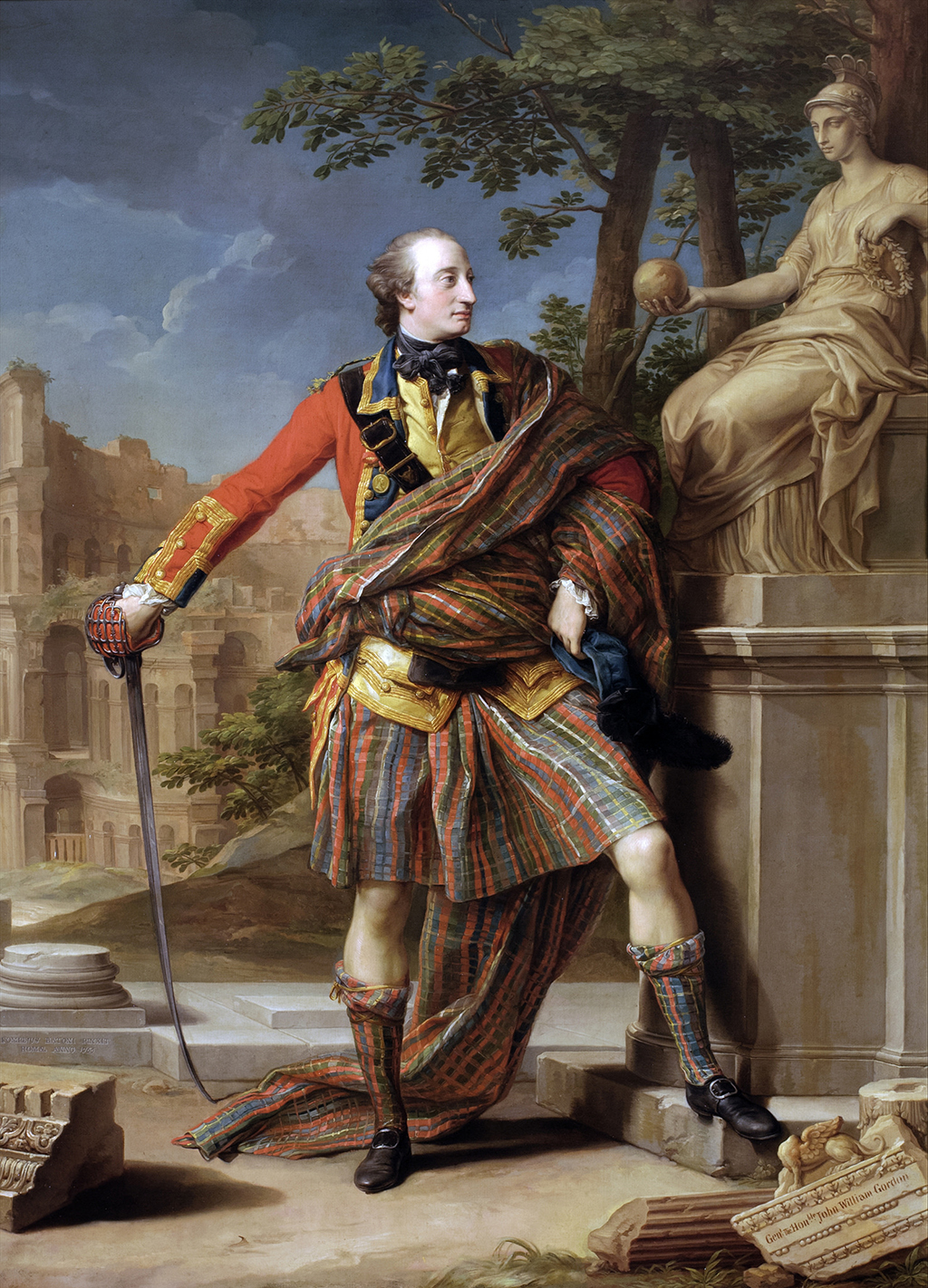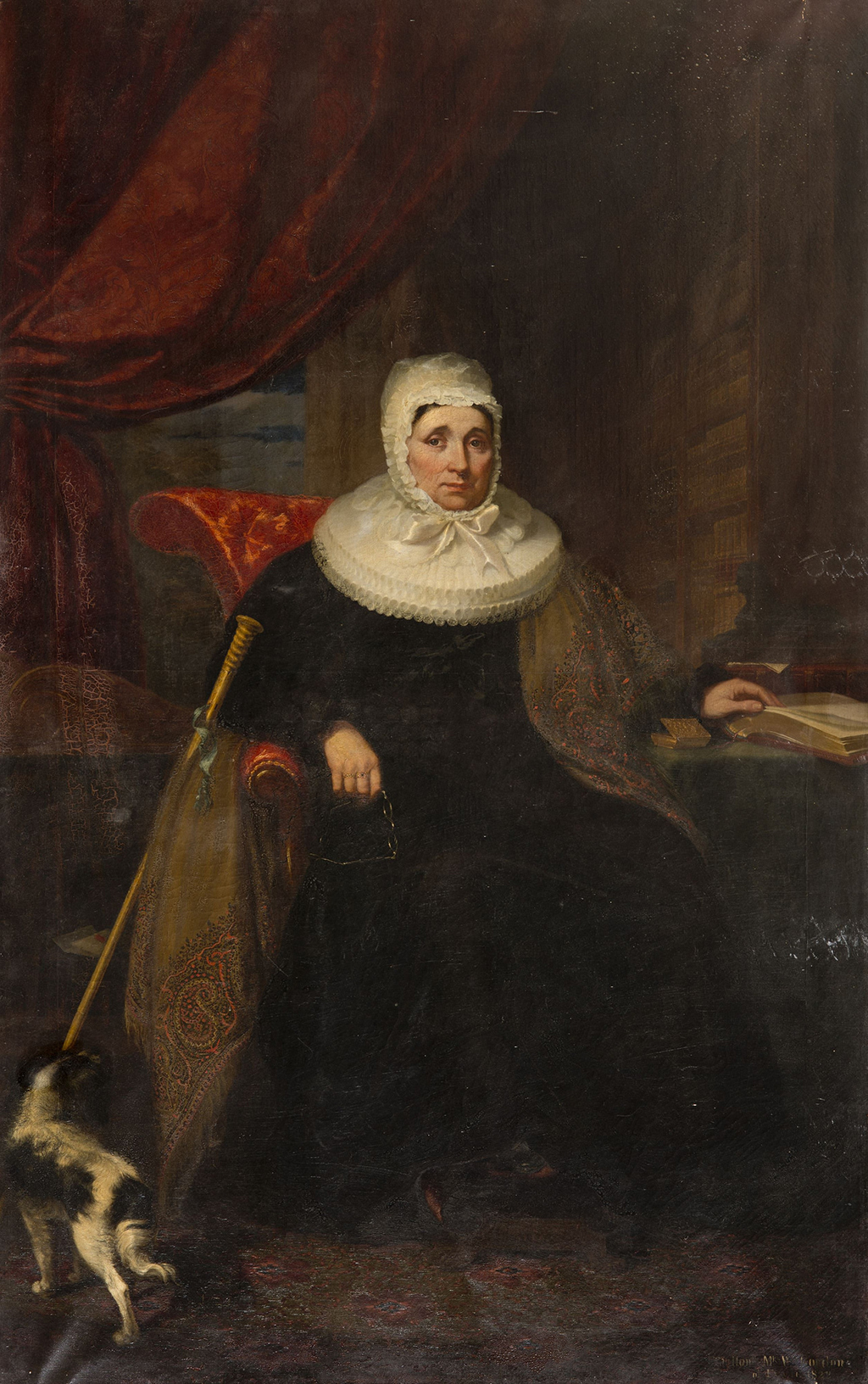
Celebrated Scots artwork is a Dutch of class
One of the National Trust for Scotland’s most-celebrated and well-known paintings is being displayed in Amsterdam.
Normally resident at Fyvie Castle, Ellon, the life-size Pompeo Batoni portrait of Colonel William Gordon (1736-1816) – wearing the uniform of the 105th Regiment of Foot and Huntly Tartan – is currently on show at the Rijksmuseum, the Dutch national museum dedicated to art and history, as part of an exhibition which showcases the work of some of the great masters of art.
The Batoni is one of 35 historic paintings of Europe’s rich and powerful from all over the world being displayed at the museum’s High Society exhibition, which runs until 3 June.
Painted in Rome during his ‘grand tour’ of Europe in 1766, the portrait depicts William Gordon as a swaggering Scotsman in the guise of a Roman hero – a style preferred by the aristocracy of the time – standing before the ruins of the Colosseum, swathed in toga-like tartan.
The Colonel is holding his sword, which he famously threatened to use to quash a revolt in the Houses of Parliament in 1780, and is seen receiving the orb of authority and laurel wreath of victory from the figure of Roma.

The Pompeo Batoni portrait of Colonel William Gordon
David Hopes, Head of Collections and Interiors (Policy) at the National Trust for Scotland, said: ‘The inclusion of the portrait in such a high-profile exhibition is testament to its quality and importance – Batoni was one of the most famous artists of his time and the painting of Colonel Gordon is one of his seminal pieces.
‘This isn’t the first time the painting has gone on tour; it’s an ambassador for the National Trust for Scotland, having previously been displayed in Washington D.C., Edinburgh and Monza. It’s a special piece and we’re thrilled to have the opportunity to share it with the wider world.’
Temporarily taking the Batoni painting’s place at Fyvie Castle is a picture of Colonel Gordon’s former scullery maid and housekeeper, Isobel ‘Belle’ Black. Isobel was also his mistress, bearing him a son known as William Gordon of Fyvie, before becoming his wife.
Because of the circumstances of his birth, William Gordon of Fyvie remained unmarried throughout his life. He had a keen interest in science and astronomy and was responsible for the development of the castle’s extensive library, which contains books dating back to the 1570s and a wide collection of works on Jacobite history.

The Honourable Mrs Gordon of Fyvie
The portrait of Isobel was painted during the 1830s by James Giles, an Aberdeen-born artist. She is portrayed in a noticeably different style to her husband’s heroic and flamboyant pose, seated in a domestic interior wearing the frilled indoor cap of a married woman and a large white cartwheel ruff. A portrait of her son William Gordon of Fyvie also currently hangs in the castle’s Morning Room.
Vikki Duncan, Curator North, for the National Trust for Scotland, explained: ‘One of the most striking aspects about the painting of Belle Black is the very different way in which she is portrayed compared to her husband.
‘Whereas Colonel Gordon is painted as the grand Roman hero in the prime of his life, she has been painted in late middle age. She is wearing an indoor cap, which was a modest necessity worn by matrons and spinsters of the time. She also wears a large cartwheel ruff, which had become fashionable again in an era which harked back to the romanticism of the Elizabethan period – then considered a golden age.
‘William Gordon taking his housekeeper as his mistress wouldn’t have been terribly scandalous – it was not unusual at the time – but, by legitimising William Gordon of Fyvie, it was tantamount to saying that he was William Gordon’s son and heir. Although he would never inherit his father’s estates, he did inherit Fyvie Castle and William Gordon was raised as a gentleman. He attended Eton, then the University of Cambridge, and was popular within society – unlike his mother.
‘This is the first time we will be displaying the portrait of Isobel Black at Fyvie Castle – we only re-discovered the painting at Mar Lodge last summer. It had been in storage for years and we then managed to work out who she was. When the portrait of Colonel Gordon returns from Amsterdam, we might look to re-unite the family, displaying them together in one room temporarily in what would be another first for the Trust.’
TAGS

